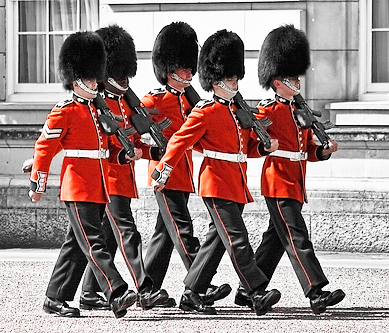World View – May
“Changing the Guard: The Movement to Modernize the British Monarchy”
By Alice Charles
The British monarchy boasts a proud legacy of powerful rulers including the likes of Queen Elizabeth I, Queen Victoria and the current Queen Elizabeth II. In light of this past and present glory, it’s hard to imagine that an “equal rights” movement would ever be necessary regarding the crown. Yet, even now, as the entire world celebrates the nuptials of Britain’s “It Couple” Prince William and Kate Middleton, a movement to change an antiquated and sexist law is in full swing. Learn more about the current efforts to make it legal for a royal female with brothers to ascend to the throne, courtesy of Wiles’ U. K. Correspondent Alice Charles.
In the run-up to what has been billed as “the wedding of the century,” the world’s attention has recently been focused on the United Kingdom. And with the blanket of news coverage obsessing over every little royal wedding detail – from the dress Catherine Middleton would wear, to who had landed a coveted spot on the guest list – a more serious story has also risen to the surface: a possible reformation of the laws pertaining to royal succession.
As it currently stands, if William and Kate were to have a girl as their firstborn child, and then go on to later have a boy, it would be their son, not their daughter, who would be first in line for the throne.
Such blatant sexism clearly has no place in 21st-century Britain, and Deputy Prime Minister Nick Clegg has been quite vocal in stating that it is time this ruling was changed. “I think it is worth thinking about,” he said.
But shortly after Nick Clegg made his comments, the lid came off of Pandora’s proverbial box. The press jumped on the story, and there have been some disturbing responses floating about in the media ever since. There are those who see any reform at all as a threat to the British monarchy, itself – believing that such change would add fuel to the republican lobby’s fire. But if this is truly the case, then what are we to make of the instances in which similar reform has actually worked?
Sweden, after all, managed to change the law of succession in 1979 without much ado. The King and Queen had a baby girl, Victoria, followed by a boy, Carl Philip; and their son was automatically given the title of “Crown Prince” ahead of his older sister. Swedish lawmakers realized that this was wrong and they immediately changed the law. Simple, right?
In the UK, it’s been argued that changing the law wouldn’t be quite so straightforward. The Queen is, after all, the Monarch of 15 other nations, including Australia – and any change would have to be approved by them. Whether or not nations like Australia are opposed to such change is, at this moment, anyone’s guess. Supporters of the change are, however, pushing for these nations to chime on the matter.
There have been centuries of kings and queens in the British Isles; and some of the most celebrated eras in British history bear names of monarchs such as “Elizabeth,” and “Victoria.” Having a woman sit on the throne is as natural an occurrence at Buckingham Palace as is the changing of the guard.
Many of us agree that Nick Clegg was correct in raising the question of royal succession. What will happen next is the subject of much speculation.
It has always been the duty of the monarchy to provide leadership to its subjects. So, as we fixate on our dashing Prince William and his bride—the newly dubbed Duke and Duchess of Cambridge–we can only hope that, as the future of the British monarchy, they will lead the charge to ensure that this archaic bastion of sexism is outlawed once and for all.
[learn_more caption=”About The Writer” state=”open”] Alice Charles is a freelance journalist and screenwriter who splits her time between London and Los Angeles.
Alice Charles is a freelance journalist and screenwriter who splits her time between London and Los Angeles.
Website: mediajunkie100.blogspot.com
[/learn_more]

